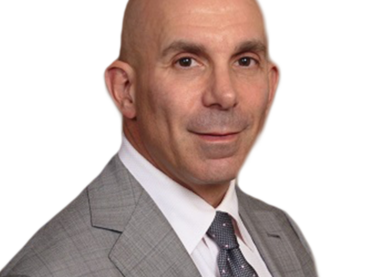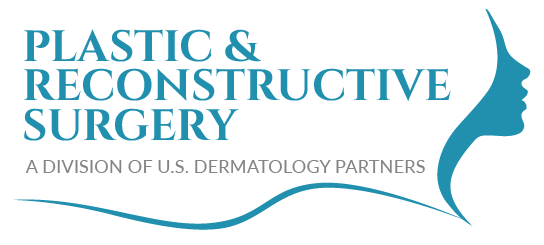Breast Augmentation
Breast augmentation surgery is a relatively common form of plastic surgery that delivers numerous benefits for those who choose to move forward with this procedure. It’s important to have all the facts before making the final decision to move forward with any plastic surgery procedure. On this page, you can learn some of the basic details about breast augmentation, but to truly understand the procedure and your treatment options, you should work with a skilled plastic surgeon like one of the professionals at Plastic & Reconstructive Surgery – a division of U.S. Dermatology Partners. During a consultation visit, a plastic surgeon can fully explain your options and develop a personalized breast augmentation plan.
What Is Breast Augmentation Surgery?
You may have heard people refer to breast augmentation as a “boob job,” or your surgeon may have called it an augmentation mammoplasty. By its clinical or common name, the procedure offers the same outcomes. It utilizes implants or fat transfers to increase the size of breasts. It may be desired to increase chest size for those who have naturally smaller breasts, restore volume following childbirth or weight loss, or improve the shape and symmetry of the breasts. While breast augmentation can improve the size and shape of breasts and help to get a slightly lifted look, it does not lift more significant drooping or sagging breasts. For this, your surgeon will need to perform a breast lift, which may be recommended in conjunction with the breast augmentation procedure.
Benefits of Breast Augmentation
There are numerous benefits associated with breast augmentation surgery, including:
- Improving the fullness and volume of curves
- Increasing the height and projection of breasts
- Creating better symmetry between breasts
- Creating better overall body symmetry between the chest, waist, and hips
- Delivering a more youthful appearance
- Improving self-image and sense of femininity
- Restoring lost fullness after weight loss, pregnancy, or mastectomy
- Allowing for better clothing fit
Recovery After Breast Augmentation
Following breast augmentation, your surgeon will place bandages to protect and support the chest as it heals. This helps to minimize swelling and promote comfort throughout the healing process. Once you have been bandaged and fully recovered from the anesthesia, you will be released to return home. Your surgeon will walk you through at-home care steps and provide you with the necessary guidance to ensure you heal fully and with minimal discomfort. You may receive prescriptions for pain, antibiotics, and/or topical ointments, and other care items to support healing. Your surgeon will also schedule a follow-up appointment to check your healing progress, starting immediately the day after your surgery. You will need to wear a support garment day and night to prevent tugging or putting excess strain on the surgical site. Rest is the most important element of healing post-procedure. Make sure to get plenty of sleep and avoid lifting heavy items, exercising, or performing other strenuous activities until your plastic surgeon releases you for these activities.
Risks Associated with Breast Augmentation Surgery
Choosing to move forward with breast augmentation, like any cosmetic surgery procedure, does come with risks. Before you schedule elective procedures, take time to talk with your plastic surgeon, ask any questions you have, discuss concerns, and ensure you fully understand all the risks associated with your specific procedure. Your medical history and the specifics of your procedure will impact the outcomes and risks associated with your surgery. Because surgery always involves some level of risk, you will need to sign consent forms prior to treatment, so it’s important to talk through all of this with your surgeon.
Every person will respond to surgery differently, but some risks commonly associated with breast augmentation include:
- Adverse response to local and general anesthesia. This is relatively common and can usually be mitigated or immediately addressed during the procedure. However, some patients do have extreme adverse responses to anesthesia. Report any past adverse anesthesia response to your surgeon.
- Some bleeding around the incisions is common for the first few days after the procedure. If bleeding persists or becomes heavy, it may indicate a more serious concern. Please contact your surgeon or visit an emergency department right away.
- Changes in sensation and sensitivity are very common, especially around the nipples. For some, this is temporary, but for others, it is a permanent change.
- The abnormal accumulation of fluid, called seroma, is a common complication following cosmetic surgery procedures. In most cases, the fluid is resorbed during the healing process. However, there are some situations where additional intervention is needed to drain away excess fluid.
- Light bruising at the injection site is common during healing, but more severe bruises, called hematomas, occur when blood pools beneath the skin can be indicative of a more serious concern.
- Irregular, tight, or painful scar tissue formation. Your surgeon will do their utmost to ensure scarring is minimized, but some scarring will occur following surgery. If you have noticeable or painful scar formation, there are steps you can take to address these concerns. Discuss any issues with scar formation with your surgeon.
- Issues with the implant. Leakage, ruptures, incorrect positioning, wrinkling over the implant, and other concerns are rare, but they may happen. If you have concerns, contact your surgeon right away. You may need a revision surgery to correct these irregularities.
- Infection is a risk with any surgery. If you notice signs of infection, reach out to your surgeon as soon as possible.
- Severe or persisting pain. Immediately following and for the first few weeks after surgery, you may notice some pain and discomfort. However, if pain persists or gets worse, contact your surgeon.
- There is a group of rare cancers that may develop as a result of breast augmentation surgery. While the occurrence of these forms of cancer is rare, it’s important to understand the risk before moving forward with treatment.
FIND A PHYSICIAN NEAR YOU
PHYSICIANS THAT OFFER BREAST AUGMENTATION PROCEDURE

Chris Surek, DO

Daniel Bortnick, MD


